- Home
- Richard Dawkins
The Greatest Show on Earth: The Evidence for Evolution Page 3
The Greatest Show on Earth: The Evidence for Evolution Read online
Page 3
Darwin explained in his autobiography how in 1838 he was reading Malthus’s On Population ‘for amusement’ (under the influence, Matt Ridley suspects, of his brother Erasmus’s formidably intelligent friend, Harriet Martineau) and received the inspiration for natural selection: ‘Here, then I had at last got a theory by which to work.’ For Darwin, natural selection was a hypothesis, which might have been right or might have been wrong. He thought the same of evolution itself. What we now call the fact of evolution was, in 1838, a hypothesis for which evidence needed to be collected. By the time Darwin came to publish On the Origin of Species in 1859, he had amassed enough evidence to propel evolution itself, though still not natural selection, a long way towards the status of fact. Indeed, it was this elevation from hypothesis towards fact that occupied Darwin for most of his great book. The elevation has continued until, today, there is no longer a doubt in any serious mind, and scientists speak, at least informally, of the fact of evolution. All reputable biologists go on to agree that natural selection is one of its most important driving forces, although – as some biologists insist more than others – not the only one. Even if it is not the only one, I have yet to meet a serious biologist who can point to an alternative to natural selection as a driving force of adaptive evolution – evolution towards positive improvement.
In the rest of this book, I shall demonstrate that evolution is an inescapable fact, and celebrate its astonishing power, simplicity and beauty. Evolution is within us, around us, between us, and its workings are embedded in the rocks of aeons past. Given that, in most cases, we don’t live long enough to watch evolution happening before our eyes, we shall revisit the metaphor of the detective coming upon the scene of a crime after the event and making inferences. The aids to inference that lead scientists to the fact of evolution are far more numerous, more convincing, more incontrovertible, than any eye-witness reports that have ever been used, in any court of law, in any century, to establish guilt in any crime. Proof beyond reasonable doubt? Reasonable doubt? That is the understatement of all time.
* Not my favourite Yeats line, but apt in this case.
* For the sake of decorum / Pronounce it theorum.
CHAPTER 2
DOGS, COWS AND CABBAGES
WHY did it take so long for a Darwin to arrive on the scene? What delayed humanity’s tumbling to that luminously simple idea which seems, on the face of it, so much easier to grasp than the mathematical ideas given us by Newton two centuries earlier – or, indeed, by Archimedes two millennia earlier? Many answers have been suggested. Perhaps minds were cowed by the sheer time it must take for great change to occur – by the mismatch between what we now call geological deep time and the lifespan and comprehension of the person trying to understand it. Perhaps it was religious indoctrination that held us back. Or perhaps it was the daunting complexity of a living organ such as an eye, freighted as it is with the beguiling illusion of design by a master engineer. Probably all those played a role. But Ernst Mayr, grand old man of the neo-Darwinian synthesis, who died in 2005 at the age of 100, repeatedly voiced a different suspicion. For Mayr, the culprit was the ancient philosophical doctrine of – to give it its modern name – essentialism. The discovery of evolution was held back by the dead hand of Plato.*
THE DEAD HAND OF PLATO
For Plato, the ‘reality’ that we think we see is just shadows cast on the wall of our cave by the flickering light of the camp fire. Like other classical Greek thinkers, Plato was at heart a geometer. Every triangle drawn in the sand is but an imperfect shadow of the true essence of triangle. The lines of the essential triangle are pure Euclidean lines with length but no breadth, lines defined as infinitely narrow and as never meeting when parallel. The angles of the essential triangle really do add up to exactly two right angles, not a picosecond of arc more or less. This is not true of a triangle drawn in the sand: but the triangle in the sand, for Plato, is but an unstable shadow of the ideal, essential triangle.
Biology, according to Mayr, is plagued by its own version of essentialism. Biological essentialism treats tapirs and rabbits, pangolins and dromedaries, as though they were triangles, rhombuses, parabolas or dodecahedrons. The rabbits that we see are wan shadows of the perfect ‘idea’ of rabbit, the ideal, essential, Platonic rabbit, hanging somewhere out in conceptual space along with all the perfect forms of geometry. Flesh-and-blood rabbits may vary, but their variations are always to be seen as flawed deviations from the ideal essence of rabbit.
How desperately unevolutionary that picture is! The Platonist regards any change in rabbits as a messy departure from the essential rabbit, and there will always be resistance to change – as if all real rabbits were tethered by an invisible elastic cord to the Essential Rabbit in the Sky. The evolutionary view of life is radically opposite. Descendants can depart indefinitely from the ancestral form, and each departure becomes a potential ancestor to future variants. Indeed, Alfred Russel Wallace, independent co-discoverer with Darwin of evolution by natural selection, actually called his paper ‘On the tendency of varieties to depart indefinitely from the original type’.
If there is a ‘standard rabbit’, the accolade denotes no more than the centre of a bell-shaped distribution of real, scurrying, leaping, variable bunnies. And the distribution shifts with time. As generations go by, there may gradually come a point, not clearly defined, when the norm of what we call rabbits will have departed so far as to deserve a different name. There is no permanent rabbitiness, no essence of rabbit hanging in the sky, just populations of furry, long-eared, coprophagous, whisker-twitching individuals, showing a statistical distribution of variation in size, shape, colour and proclivities. What used to be the longer-eared end of the old distribution may find itself the centre of a new distribution later in geological time. Given a sufficiently large number of generations, there may be no overlap between ancestral and descendant distributions: the longest ears among the ancestors may be shorter than the shortest ears among the descendants. All is fluid, as another Greek philosopher, Heraclitus, said; nothing fixed. After a hundred million years it may be hard to believe that the descendant animals ever had rabbits for ancestors. Yet in no generation during the evolutionary process was the predominant type in the population far from the modal type in the previous generation or the following generation. This way of thinking is what Mayr called population thinking. Population thinking, for him, was the antithesis of essentialism. According to Mayr, the reason Darwin was such an unconscionable time arriving on the scene was that we all – whether because of Greek influence or for some other reason – have essentialism burned into our mental DNA.
For the mind encased in Platonic blinkers, a rabbit is a rabbit is a rabbit. To suggest that rabbitkind constitutes a kind of shifting cloud of statistical averages, or that today’s typical rabbit might be different from the typical rabbit of a million years ago or the typical rabbit of a million years hence, seems to violate an internal taboo. Indeed, psychologists studying the development of language tell us that children are natural essentialists. Maybe they have to be if they are to remain sane while their developing minds divide things into discrete categories each entitled to a unique noun. It is no wonder that Adam’s first task, in the Genesis myth, was to give all the animals names.
And it is no wonder, in Mayr’s view, that we humans had to wait for our Darwin until well into the nineteenth century. To dramatize how very anti-essentialist evolution is, consider the following. On the ‘population-thinking’ evolutionary view, every animal is linked to every other animal, say rabbit to leopard, by a chain of intermediates, each so similar to the next that every link could in principle mate with its neighbours in the chain and produce fertile offspring. You can’t violate the essentialist taboo more comprehensively than that. And it is not some vague thought-experiment confined to the imagination. On the evolutionary view, there really is a series of intermediate animals connecting a rabbit to a leopard, every one of whom lived and breathed, every one of who
m would have been placed in exactly the same species as its immediate neighbours on either side in the long, sliding continuum. Indeed, every one of the series was the child of its neighbour on one side and the parent of its neighbour on the other. Yet the whole series constitutes a continuous bridge from rabbit to leopard – although, as we shall see later, there never was a ‘rabbipard’. There are similar bridges from rabbit to wombat, from leopard to lobster, from every animal or plant to every other. Maybe you have reasoned for yourself why this startling result follows necessarily from the evolutionary world-view, but let me spell it out anyway. I’ll call it the hairpin thought experiment.
Take a rabbit, any female rabbit (arbitrarily stick to females, for convenience: it makes no difference to the argument). Place her mother next to her. Now place the grandmother next to the mother and so on back in time, back, back, back through the megayears, a seemingly endless line of female rabbits, each one sandwiched between her daughter and her mother. We walk along the line of rabbits, backwards in time, examining them carefully like an inspecting general. As we pace the line, we’ll eventually notice that the ancient rabbits we are passing are just a little bit different from the modern rabbits we are used to. But the rate of change will be so slow that we shan’t notice the trend from generation to generation, just as we can’t see the motion of the hour hand on our watches – and just as we can’t see a child growing, we can only see later that she has become a teenager, and later still an adult. An additional reason why we don’t notice the change in rabbits from one generation to another is that, in any one century, the variation within the current population will normally be greater than the variation between mothers and daughters. So if we try to discern the movement of the ‘hour hand’ by comparing mothers with daughters, or indeed grandmothers with granddaughters, such slight differences as we may see will be swamped by the differences among the rabbits’ friends and relations gambolling in the meadows round about.
Nevertheless, steadily and imperceptibly, as we retreat through time, we shall reach ancestors that look less and less like a rabbit and more and more like a shrew (and not very like either). One of these creatures I’ll call the hairpin bend, for reasons that will become apparent. This animal is the most recent common ancestor (in the female line, but that is not important) that rabbits share with leopards. We don’t know exactly what it looked like, but it follows from the evolutionary view that it definitely had to exist. Like all animals, it was a member of the same species as its daughters and its mother. We now continue our walk, except that we have turned the bend in the hairpin and are walking forwards in time, aiming towards the leopards (among the hairpin’s many and diverse descendants, for we shall continually meet forks in the line, where we consistently choose the fork that will eventually lead to leopards). Each shrew-like animal along our forward walk is now followed by her daughter. Slowly, by imperceptible degrees, the shrew-like animals will change, through intermediates that might not resemble any modern animal much but strongly resemble each other, perhaps passing through vaguely stoat-like intermediates, until eventually, without ever noticing an abrupt change of any kind, we arrive at a leopard.
Various things must be said about this thought experiment. First, we happen to have chosen to walk from rabbit to leopard, but I repeat that we could have chosen porcupine to dolphin, wallaby to giraffe or human to haddock. The point is that for any two animals there has to be a hairpin path linking them, for the simple reason that every species shares an ancestor with every other species: all we have to do is walk backwards from one species to the shared ancestor, then turn through a hairpin bend and walk forwards to the other species.
Second, notice that we are talking only about locating a chain of animals that links a modern animal to another modern animal. We are most emphatically not evolving a rabbit into a leopard. I suppose you could say we are de- evolving back to the hairpin, then evolving forwards to the leopard from there. As we’ll see in a later chapter, it is unfortunately necessary to explain, again and again, that modern species don’t evolve into other modern species, they just share ancestors: they are cousins. This, as we shall see, is also the answer to that disquietingly common plaint: ‘If humans have evolved from chimpanzees, how come there are still chimpanzees around?’
Third, on our forward march from the hairpin animal, we arbitrarily choose the path leading to the leopard. This is a real path of evolutionary history, but, to repeat this important point, we choose to ignore numerous branch points where we could have followed evolution to countless other end points – for the hairpin animal is the grand ancestor not only of rabbits and leopards but of a large fraction of modern mammals.
The fourth point, which I have already emphasized, is that, however radical and extensive the differences between the ends of the hairpin – rabbit and leopard, say – each step along the chain that links them is very, very small. Every individual along the chain is as similar to its neighbours in the chain as mothers and daughters are expected to be. And more similar to its neighbours in the chain, as I have also mentioned, than to typical members of the surrounding population.
You can see how this thought experiment drives a coach and horses through the elegant Greek temple of Platonic ideal forms. And you can see how, if Mayr is right that humans are deeply imbued with essentialist preconceptions, he might well also be right about why we historically found evolution so hard to stomach.
The word ‘essentialism’ itself wasn’t invented till 1945 and so was not available to Darwin. But he was only too familiar with the biological version of it in the form of the ‘immutability of species’, and much of his effort was directed towards combating it under that name. Indeed, in several of Darwin’s books – more so in others than On the Origin of Species itself – you’ll understand fully what he’s on about only if you shed modern presuppositions about evolution, and remember that a large part of his audience would have been essentialists who never doubted the immutability of species. One of Darwin’s most telling weapons in arguing against this supposed immutability was the evidence from domestication, and it is domestication that will occupy the rest of this chapter.
Sculpting the gene pool
Darwin knew plenty about animal and plant breeding. He communed with pigeon fanciers and horticulturalists, and he loved dogs.* Not only is the first chapter of On the Origin of Species all about domestic varieties of animals and plants; Darwin also wrote a whole book on the subject. The Variation of Animals and Plants under Domestication has chapters on dogs and cats, horses and asses, pigs, cattle, sheep and goats, rabbits, pigeons (two chapters; pigeons were a particular love of Darwin), chickens and various other birds, and plants, including the amazing cabbages. Cabbages are a vegetable affront to essentialism and the immutability of species. The wild cabbage, Brassica oleracea, is an undistinguished plant, vaguely like a weedy version of a domestic cabbage. In just a few centuries, wielding the fine and coarse chisels furnished by the toolbox of selective breeding techniques, horticulturalists have sculpted this rather nondescript plant into vegetables as strikingly different from each other and from the wild ancestor as broccoli, cauliflower, kohlrabi, kale, Brussels sprouts, spring greens, romanescu and, of course, the various kinds of vegetables that are still commonly called cabbage.
Another familiar example is the sculpting of the wolf, Canis lupus, into the two hundred or so breeds of dog, Canis familiaris, that are recognized as separate by the UK Kennel Club, and the larger number of breeds that are genetically isolated from one another by the apartheid-like rules of pedigree breeding.
Incidentally, the wild ancestor of all domestic dogs really does seem to be the wolf and only the wolf (although its domestication may have happened independently in different places around the world). Evolutionists haven’t always thought so. Darwin, along with many of his contemporaries, suspected that several species of wild canid, including wolves and jackals, had contributed ancestry to our domestic dogs. The Nobel Prize-winning Austrian et
hologist Konrad Lorenz was of the same view. His Man Meets Dog, published in 1949, pushes the notion that domestic dog breeds fall into two main groups: those derived from jackals (the majority) and those derived from wolves (Lorenz’s own favourites, including Chows). Lorenz seems to have had no evidence at all for his dichotomy, other than the differences that he thought he saw in the personalities and characters of the breeds. The matter remained open until molecular genetic evidence came along to clinch it. There is now no doubt. Domestic dogs have no jackal ancestry at all. All breeds of dogs are modified wolves: not jackals, not coyotes and not foxes.
The main point I want to draw out of domestication is its astonishing power to change the shape and behaviour of wild animals, and the speed with which it does so. Breeders are almost like modellers with endlessly malleable clay, or like sculptors wielding chisels, carving dogs or horses, or cows or cabbages, to their whim. I shall return to this image shortly. The relevance to natural evolution is that, although the selecting agent is man and not nature, the process is otherwise exactly the same. This is why Darwin gave so much prominence to domestication at the beginning of On the Origin of Species. Anybody can understand the principle of evolution by artificial selection. Natural selection is the same, with one minor detail changed.
Strictly speaking, it is not the body of the dog or the cabbage that is carved by the breeder/sculptor but the gene pool of the breed or species. The idea of a gene pool is central to the body of knowledge and theory that goes under the name of the ‘Neo-Darwinian Synthesis’. Darwin himself knew nothing of it. It was not a part of his intellectual world, nor indeed were genes. He was aware, of course, that characteristics run in families; aware that offspring tend to resemble their parents and siblings; aware that particular characteristics of dogs and pigeons breed true. Heredity was a central plank of his theory of natural selection. But a gene pool is something else. The concept of a gene pool has meaning only in the light of Mendel’s law of the independent assortment of hereditary particles. Darwin never knew Mendel’s laws, for although Gregor Mendel, the Austrian monk who was the father of genetics, was Darwin’s contemporary, he published his findings in a German journal which Darwin never saw.

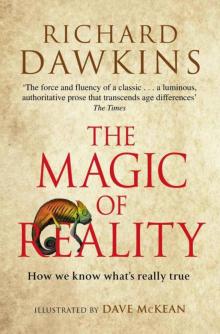 The Magic of Reality
The Magic of Reality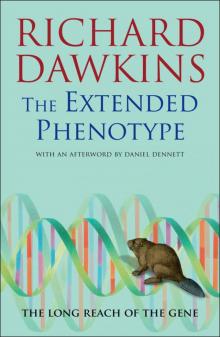 The Extended Phenotype
The Extended Phenotype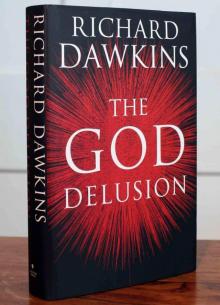 The God Delusion
The God Delusion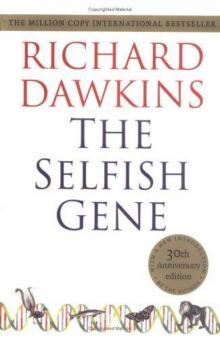 The Selfish Gene
The Selfish Gene The Blind Watchmaker
The Blind Watchmaker The Greatest Show on Earth
The Greatest Show on Earth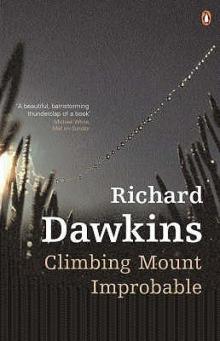 Climbing Mount Improbable
Climbing Mount Improbable Outgrowing God
Outgrowing God Brief Candle in the Dark
Brief Candle in the Dark The Greatest Show on Earth: The Evidence for Evolution
The Greatest Show on Earth: The Evidence for Evolution Science in the Soul
Science in the Soul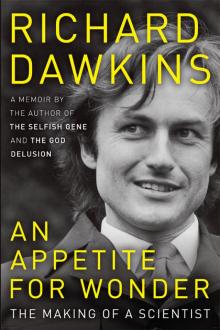 An Appetite for Wonder
An Appetite for Wonder